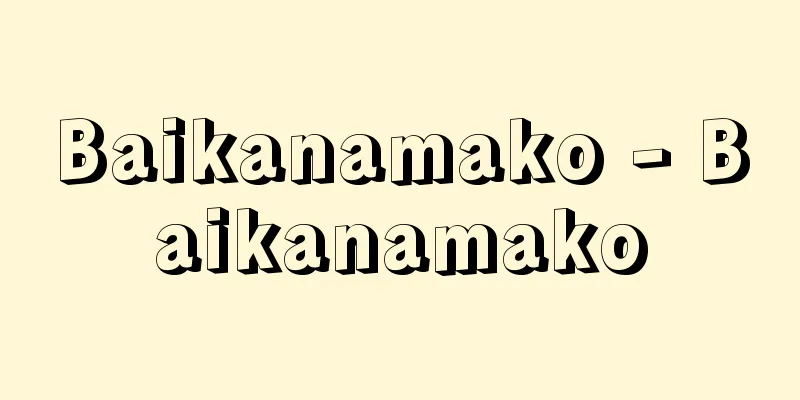Contrapositive

|
〘Noun〙① (━suru) Two things that form a set. In a pair. ※Kan'ei-published Honmōkyūshō (c. 1529), 6: "In reality, they are in opposition, but I fear they will not become a married couple." ※Nihon Fukeiron (1894), by Shiga Shigetaka, 4: "The ever-changing appearance of these clouds contrasts with the stillness and immobility of those waters." ② A type. Also. A member of the same family. ③ A husband and wife. Partner. Spouse. [Shunju Zuo Zhuan Commentary - Shōkō 2nd year] ④ (━suru) Rhetorically, placing two opposing things side by side. Couple (tsuiku) . ※Ensho Shonin no Gyojyo (1302) "A famous monk must teach two pairs of contrapositives, using law against law and metaphor against metaphor ." ※Lessons (1783) 9 "Although many of the place names in this country are used in poetry and are elegant, there are quite a few that should be used as contrapositives ." ⑤ In contrast to a proposition of the form "If A, then B," this is a proposition of "If it is not B, then it is not A." The former is also the contrapositive of the latter. The truth and negation of a proposition and its contrapositive (proposition) are the same. ※Chichi Keimo (1874) <Nishi Amane> Vol. 2 "In the contrapositive method, if the sign of negation is made affirmative, then we obtain B, which is the contrapositive of T." ⑥ A mechanical mechanism that combines two mechanical elements that come into contact with each other. For example, an axle and a bearing, or a bolt and a nut. Source: The Selected Edition of the Japanese Language Dictionary About the Selected Edition of the Japanese Language Dictionary Information |
|
〘名〙① (━する) 二つで一そろいになっていること。つい。※寛永刊本蒙求抄(1529頃)六「当は対偶している事ぢゃが、夫婦にえなるまいと恐るるぞ」※日本風景論(1894)〈志賀重昂〉四「此雲の変幻出没と彼水の寂静不動と対偶す」② たぐい。とも。なかま。③ 夫婦。つれあい。配偶。〔春秋左伝疏‐昭公二年〕④ (━する) 修辞上、相対した二つの物事をならべて置くこと。対句(ついく)。※円照上人行状(1302)「名僧唱導必用二対偶一、以レ法対レ法、以レ喩対レ喩」※授業編(1783)九「此邦の地名も詩中に用て雅馴なるも多く対偶(タイクウ)すべきもすくなからず」⑤ 「AならB」というかたちの命題に対し、「BでなければAではない」という命題。前者は、また後者の対偶となっている。命題とその対偶(命題)の正否は一致する。※致知啓蒙(1874)〈西周〉下「対偶法にて、其否定の標しを、肯定となせば、丁の対偶なる乙を得」⑥ 機械の機構で、相接触する二つの機械要素を組み合わせたもの。軸と軸受け、ボルトとナットなど。
出典 精選版 日本国語大辞典精選版 日本国語大辞典について 情報 |
Recommend
Stone jellyfish - Stone jellyfish
...There are many species, and they grow in a var...
Blast furnace - kouro (English spelling)
Another name for a blast furnace. A furnace used ...
Vampyrum spectrum
…Many species have nasal lobes, but in rare cases...
Cutout craft - Cutout craft
…A handicraft made by cutting paper into various ...
Heavenly Feather Robe - Amanohagoromo
① The clothing of heavenly beings. Originally it r...
Shang Ke-xi; Shang K`o-hsi
[Born] Wanli 32 (1604) [Died] Kangxi 15 (1676). 10...
Gromwell
…the genus Lithospermum contains about 50 species...
Emecheta, B. - Emecheta
…However, the movement to redefine popular histor...
Kamisato [town] - Kamisato
A town in Kodama County, in the northwest of Saita...
Rattle stone
…A type of rare stone. It is the same as a rattle...
Ceratium longipes (English spelling) Ceratium longipes
… [Minoru Imajima]. … *Some of the terminology th...
Key currency - Kijikutsuuka
A currency widely used for international settlemen...
Nakhon Sawan - Nakhon Sawan (English spelling)
A city in central Thailand. The capital of Nakhon ...
oz ap (English spelling) ozap
...symbol dwt). (3) The apothecaries' ounce i...
Czartoryski, W.
…A Polish politician who lived through the tumult...






![Sulu [Islands] - Sulu](/upload/images/67cbfb609cf2a.webp)


